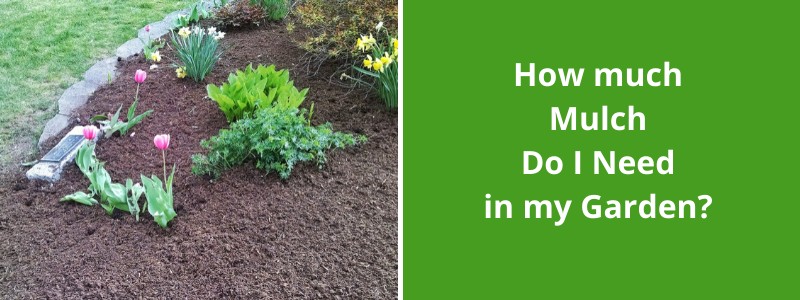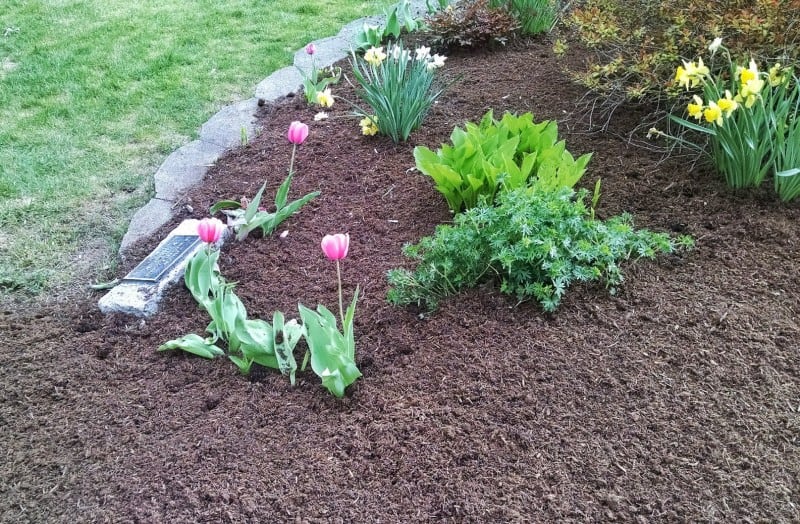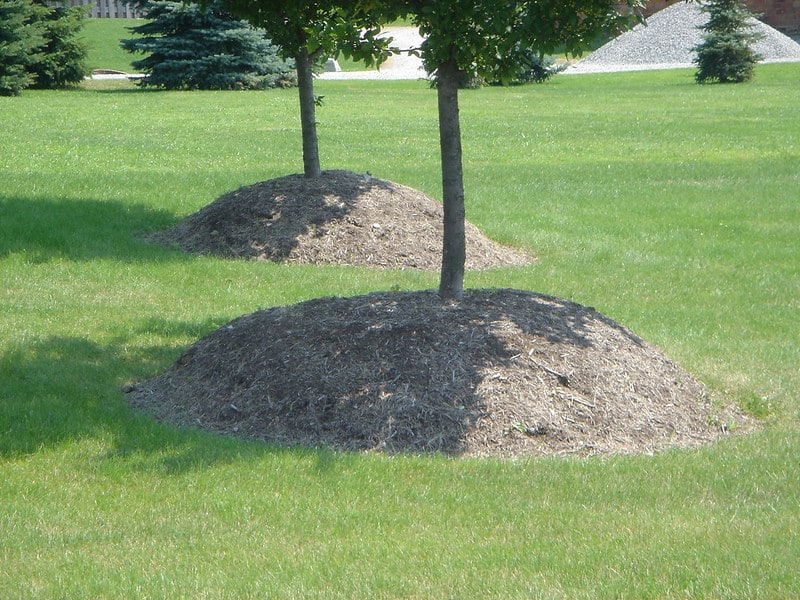Trying to figure out how much mulch you need in your garden or why you need it at all? Read out article below to get all your answers!

Gardening can be a time-consuming and sometimes very confusing task. Everyone wants a pristine looking lawn with healthy grass and flourishing flower beds, but have you ever thought about the amount of work that goes into it?
There are many painstaking details that need to be looked into. What season do the plants grow? How often and at what times do they need to be watered? Do they require additional plant food, or will soil suffice?
However many precautions you take or arrangements you make, you always feel like there’s something lacking. Well, there’s one thing that might help you and your garden out; mulch!
Below we discuss everything about mulch, what it is, what it does and how to use it, we hope this helps you in making your lawn the greenest and lushest on the block!
What is Mulch?
Mulch is something that is put on top of soil as a protective layering. It can be made of any material, as long as it is serving the purpose of retaining moisture in the soil and keeping it cool, while suppressing weeds.

Mulch can also be used for aesthetic purposes; they add color and boundaries in your garden for a clean look.
Different Kinds of Mulch
Mulch can essentially be made of anything that can serve its purpose. However, there are a few different materials that are commonly used to make mulch and easily available. Each kind of material has its own benefit and purpose. Essentially, you can divide mulch into two broad categories: organic and inorganic.
Organic Mulch:
Organic mulch can be made of bark, compost, newspaper, leaves, grass clippings or straw. Organic mulch decomposes over time and can improve your soil’s fertility.
The decomposition means that this type of mulch will need to be replaced. With organic mulch, the drier it is, the longer it will take to decompose, but in the process, it will be giving less nutrients back to the soil.
Though all these materials make organic mulch, each type will have its own use and functionality. Make sure you choose the right one for your needs.
Inorganic and Synthetic Mulch:
Synthetic and inorganic mulches come in a few different varieties. You can use black plastic, stone or gravel or landscape fabric.
These types of mulches don’t require replacing as often as they do not decompose. However, this also means that they do not give any fertility back to the soil.
Synthetic and inorganic mulches are more equipped to block out moisture and suppress any weed growth.
Synthetic mulches like plastic and fabric don’t look as appealing as the rest, so you can add a thin layer of bark for aesthetic appeal.
Importance of Mulch
Mulch is an important addition to your garden for a number of reasons. First and foremost, mulch retains moisture in the soil, which helps keep the roots of your plants moist.
Next, it controls the temperature of the soil by providing a buffer between the soil and outside elements. Finally, no plant wants to be competing with weeds for food and water from the soil; mulch prevents the growth of weeds, helping your plant grow healthier and live longer.
How Much Mulch Do You Need?
More is not always better. While adding mulch, you need to keep in mind that your plants’ roots still need air to survive. Essentially, you are trying to suffocate weeds with mulch, but if you add too thick a layer, you might suffocate your plants too.

photo credit: Anne Marie VanDerZanden
With organic mulch, a 2” thick layer is ideal for retaining moisture, but you can add more, depending on the type of mulch you are using.
If your mulch is finely shredded, the maximum thickness should be 3”, however, if you have pine or bark nuggets, they allow more airflow, so they can be placed up to 4”.
Depending on the size of your bed that you need the mulch for, and what depth you are planning for, you can decide the amount of mulch you need. Mulch can be bought by the bag or the yard, depending on how much you are planning to use.
Measuring Your Garden for Mulch
If you search online, there are multiple mulch calculators that exist and can help you figure out how much mulch you need, but you can also determine it manually.
You need to get the square footage of the bed that you need the mulch for by measuring it. If you have a rectangular plant bed, multiply the length by the width to get the square footage.
For round beds, measure from the edge to the center of the circle to get the radius. Multiply the radius with itself and then multiply the total with Pi (3.14). Now that you have the square footage, determine the depth of mulch you need.
Mulch is sold by the cubic yard. One cubic yard of the material covers a 324 squarefoot area an inch deep. So, to determine your total, multiply your square footage by the depth in inches desired, then divide by 324. The formula you will use is: Square footage x desired depth / 324 = cubic yards needed.
Related Posts
- 6 Different Types of Soil for Gardening – How to Identify and Improve Each Type
- Landscaping with Rocks vs Mulch with Pros and Cons
- How to Create a Low Maintenance Garden
- 5 Benefits of Having Artificial Grass for Your Pets to Play On
- 12 Main Pros and Cons of a Pea Gravel Patio for Your Home
- Want to Redo Your Lawn? Here Are Your Options
Leave a Reply